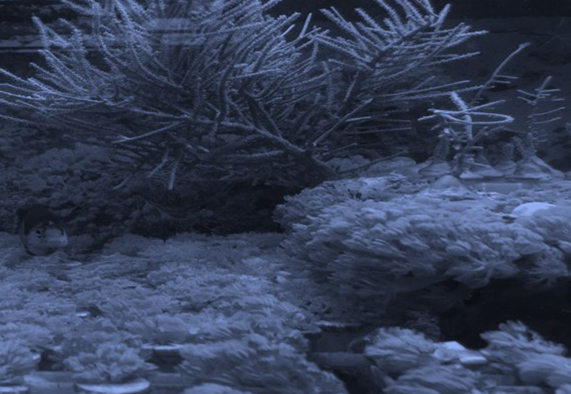Darwin Paradox
Coral reefs are highly diverse and productive communities within low nutrient tropical seas. This seemingly inconsistent situation has been described as the Darwin Paradox. To flourish in nutrient depleted waters corals evolved close interactions and metabolic interchange with microorganisms such as zooxanthellae. In addition to these hosted algae, corals harbor a complex microbiome (i.e., bacteria, archaea, fungi, and viruses) which acts together as the coral holobiont.
Coral Holobiont
Various species of nitrogen cycling microbes were described from coral holobionts and can be assigned to three different pathways where each pathway is characterized by certain functional genes: The nifH gene is involved in the fixation of dissolved molecular nitrogen; the amoA gene indicates nitrifying bacteria and archaea, and the nirS gene denitrifying bacteria. It is unknown if their metabolic interplay is controlled and well balanced. Indication of strictly controlled interactions is given by metagenomic studies from stony corals, where shifts in nitrogen-cycling microbes, were detected directly ahead of visual symptoms of bleaching. The breakdown of the coral-algal symbiosis as well as changes in nitrogen fixation rates are in particular related to temperature shifts as well as increased dissolved organic carbon (DOC) levels.
Nitrogen Cycling Microbiome
This project will trace the nitrogen cycling microbiome of several soft coral species at different environmental conditions by real time PCR. By expanding knowledge from scleractinian corals to octocorallian corals, it will be possible to draw general conclusions on the presence of the nitrogen cycling microbiome. Furthermore, temperature elevation and DOC enrichment will be used as combined effects to understand control, thresholds and importance of nitrogen cycling microbes for the holobiont functioning and to conclude their influence on coral health in a changing world





